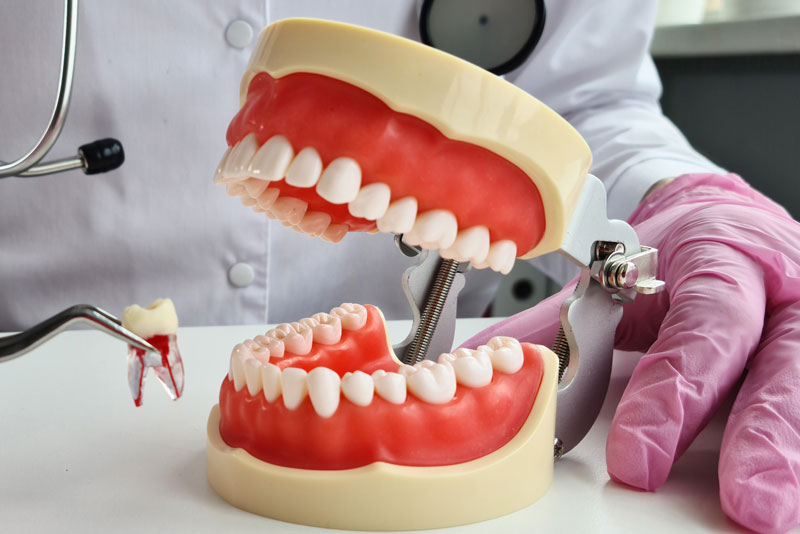From Surgery to Smile: How Long Does Wisdom Teeth Recovery Take
Recovering from wisdom teeth removal differs for everyone, with timelines ranging from a few days to several weeks, depending on the complexity of the extraction and individual healing factors. However, a faster and more comfortable recovery is possible with the appropriate care. Smile Design Dentistry plays a crucial role in your post-surgery by focusing on aesthetics and function, ensuring a smooth healing process and a beautiful and confident smile after the procedure. In this article, we’ll explore the typical timeline and how it can be an integral part of your recovery journey.
Wisdom Teeth and the Need for Extraction
Wisdom teeth, or third molars, are the last set of teeth to emerge, appearing in the late teens or early twenties. While some individuals do not experience issues, wisdom teeth can cause complications. The most common reason for tooth extraction is impaction—when the teeth fail to emerge due to insufficient space in the jaw. Impacted wisdom teeth can lead to pain, swelling, and infection, damaging adjacent teeth or bone.
In other cases, even when wisdom teeth erupt, they cause crowding, shifting teeth out of alignment, and undermining the integrity of an otherwise healthy smile. Poor positioning can also make them difficult to clean, increasing the possibility of cavities and gum disease. For these reasons, dentists often recommend extraction as a preventive measure.
Beyond these concerns, many undergo extraction to improve oral aesthetics. Misaligned or impacted wisdom teeth can alter bite patterns and jaw structure. The decision to extract wisdom teeth is a proactive step in safeguarding oral health and aesthetics.
Pain Management Post-Extraction
- Over-the-Counter Pain Relievers:
Ibuprofen or acetaminophen can manage mild to moderate pain. These are recommended for short-term use and can relieve swelling and discomfort. - Prescription Medications:
Our dentist may prescribe stronger painkillers, such as opioids. These should be taken as directed and when necessary due to potential side effects and the risk of dependency. - Cold Compresses:
Applying an ice pack to your cheek in the first 24-48 hours can reduce swelling and numb the area, providing temporary relief from pain. Apply in 15-20 minute intervals. - Saltwater Rinses:
Rinsing your mouth with warm salt water after the first 24 hours can prevent infection and aid healing. Avoid vigorous swishing, as it can disrupt clot formation. - Elevate Your Head:
Keeping your head elevated while sleeping can reduce blood flow to the extraction site, minimizing throbbing and swelling. - Avoid Straws and Smoking:
Suction from using straws or smoking can dislodge the blood clot formed at the extraction site, leading to a painful condition called dry socket. Refrain from both activities for at least a week. - Soft Diet:
Yogurt, smoothies, and applesauce are easy to consume without disturbing the extraction area. Avoid hard, spicy, or hot foods. - Hydration:
Drink water to stay hydrated, but avoid carbonated or acidic beverages that can irritate the extraction site. - Follow-Up Care:
Adhere to all post-operative instructions provided by our dentist, including follow-up visits, to ensure proper healing and address lingering pain issues.
Swelling and Inflammation
Swelling and inflammation are common after wisdom teeth extraction, peaking around 48-72 hours post-surgery. This is a natural response. While it may cause discomfort, it facilitates healing. Applying cold compresses during the first 48 hours can reduce swelling, while warm compresses afterward may soothe inflammation. Keeping your head elevated and staying hydrated also helps. Swelling subsides within a week, but in some cases, mild inflammation can persist for up to 10 days.
Best Practices for Bleeding Control
Controlling bleeding after wisdom teeth extraction is essential for proper healing. In the first few hours post-surgery, biting down on a piece of gauze creates pressure, allowing a blood clot to form. If the bleeding continues after changing the gauze, a moist tea bag can be used, as the tannins in tea promote clotting. Avoid rinsing, spitting, or using straws for at least 24 hours, as these actions can dislodge the clot. Resting with your head elevated also reduces blood flow to the area, minimizing prolonged bleeding.
Oral Hygiene after Wisdom Tooth Surgery
- Day 1:
Avoid brushing, flossing, or rinsing your mouth on the first day to allow the blood clot to stabilize and prevent dislodging. - Rinsing with Salt Water:
From day two onward, rinse your mouth with warm salt water after meals to reduce bacteria and promote healing. Avoid vigorous swishing. - Gentle Brushing:
You can resume brushing your teeth on day 2, but be cautious around the extraction site. Use a soft-bristled toothbrush and avoid contact with the surgical area. - Avoid Mouthwash:
Refrain from alcohol-based mouthwash during the initial healing period, as it can irritate the extraction site. - No Flossing Near the Site:
Skip flossing near the surgical area for at least a week to prevent irritation or dislodging of the clot. - Hydration and Saliva Flow:
Stay hydrated to maintain natural saliva flow, which cleans the mouth and prevents infection. - Check with Your Dentist:
Follow our dentist’s instructions for oral care, as recovery needs vary based on the procedure and your condition.
Diet Recommendations
First 24 Hours:
- Stick to water, smoothies, and clear soups.
- Avoid hot liquids, as they can dislodge the blood clot.
Soft Foods (First Week):
- Eat soft foods such as mashed potatoes, yogurt, applesauce, eggs, and avocado.
- Avoid crunchy, spicy, and acidic foods that could irritate the extraction site.
Hydration:
- Drink water to stay hydrated and support healing.
- Avoid carbonated, caffeinated, and alcoholic beverages, as they irritate the wound.
Temperature Control:
- Consume foods at room temperature or cold; hot foods can increase swelling or disrupt healing.
Gradual Reintroduction of Solid Foods:
- After the first few days, as tolerated, reintroduce soft, solid foods like cooked vegetables, pasta, and soft proteins.
- Avoid hard, chewy, or sticky foods until healed.
Activity Restrictions
First 24-48 Hours:
- Rest as much as possible, keeping physical activity minimal to prevent increased blood flow, which could disrupt the healing process.
No Strenuous Exercise:
- Avoid running, lifting, or vigorous exercise for at least 3-7 days, as these can increase heart rate and dislodge the blood clot.
Avoid Bending or Lifting:
- Refrain from bending/ stooping down or lifting heavy objects, as these movements can cause pressure that may affect the healing area.
No Smoking or Drinking Alcohol:
- Smoking and alcohol consumption should be avoided for at least a week, as they can impair healing and increase the risk of dry socket.
Resume Light Activity Gradually:
- Return to light activities as you feel comfortable and avoid what causes discomfort or strain on the surgical area.
Possible Complications and Detecting Signs of Infection
After wisdom teeth extraction, problems may arise, though they are uncommon with proper care. The most typical issue is dry socket, where the blood clot protecting the surgical site dislodges, leading to pain and delayed healing.
Infection is another potential complication signaled by swelling, fever, or pus around the extraction site. Nerve damage, though rare, can cause numbness or tingling in the lips, tongue, or chin. In some cases, persistent bleeding or swelling beyond the expected timeframe may occur, warranting aftercare with your dentist or oral surgeon.
Follow-up Appointments and Aftercare
Follow-ups are a vital part of ensuring proper healing after wisdom teeth extraction. Scheduled within a week post-surgery, these visits allow your dentist to check for signs of infection, dry socket, or other complications and to confirm the surgical sites are healing as expected. Smile Design Dentistry emphasizes recovery and the aesthetics and function of your smile post-extraction. These appointments provide an opportunity to evaluate how the healing process may affect alignment and plan further steps to enhance the appearance of your teeth. Customized aftercare may involve guidance on managing discomfort, cosmetic treatment recommendations, or even orthodontic work adjustments. With a focus on health and aesthetics, Our team ensures that your recovery leaves you with a functional, beautiful smile.
In Conclusion
Wisdom teeth extraction is a common procedure that, while essential for many, requires careful aftercare to ensure proper healing. From managing pain and swelling to maintaining oral hygiene and following activity restrictions, taking the appropriate steps during recovery is crucial. Follow-up appointments allow your dentist to monitor healing and address possible complications. With the integration of our team at Smile Design Dentistry, your recovery is not just about healing but about preserving and enhancing aesthetics. Combining clinical care with cosmetic insight allows you to emerge from the experience with improved dental health and a beautiful, well-aligned smile.




